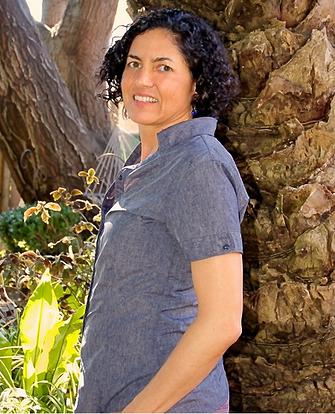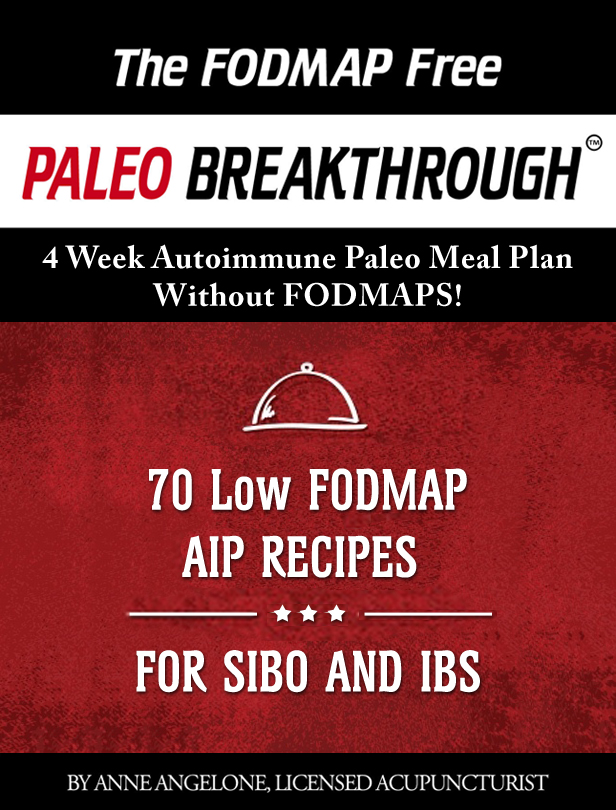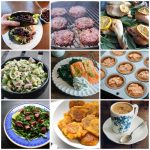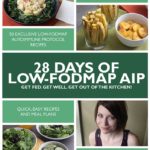“There is one consolation to being sick; and that is the possibility that you may recover to a better state than you were ever in before.”
~ Henry David Thoreau
What is SIBO?
SIBO stands for Small Intestine Bacteria Overgrowth. Having bacteria in our bodies is a normal state of being. In fact, 90% of our body is made up of microbes. So what’s the problem with finding them in the small intestine? Well, they don’t belong there, at least not in high numbers. Whereas the large intestine is the natural home for billions of microbes, a healthy small intestine only has about 100,000. So, basically, they’ve migrated. Have you ever dealt with invasive plants in your yard? They tend to take over and cause all sorts of problems. The same thing happens in the small intestine. Too many microbes:
- consume food meant for us, leading to nutrient deficiencies.
- produce gas, which can cause bloating, abdominal pain, constipation and diarrhea.
- the microbes themselves can enter our bloodstream through a leaky gut wall, causing an immune system response.
- continue to multiply, making the problem worse and worse.
What are FODMAPs?
FODMAPs stand for Fermentable Oligosaccharides, Disaccharides, Monosaccharides And Polyols. That doesn’t exactly clear things up, does it? Basically, those are fancy words for types of carbohydrates that bacteria (and other microbes) love to eat. Curious what some of those foods are? Here’s a list. A Low-FODMAP diet is a way to quickly starve the microbes in your small intestine and reduce the overgrowth.
Meet Anne Angelone

Today, she’s answering some questions about SIBO and donating a copy of her 4-week AIP and FODMAP-Free meal plan to giveaway!
Our Interview with the Details
Anne, what causes SIBO?
SIBO can be caused by many things:
- A dysfunction of the migrating motor complex (the cleansing wave in the small intestine that sweeps the food along).
- Problems with the brain/gut/nerve connection, which can slow down motility, blood flow and enzyme release to the gut.
- FODMAP malabsorption.
- Not enough dietary fiber.
- Too little stomach acid.
- A history of multiple antibiotic use.
- Post infectious irritable bowel syndrome (IBS).
- Leaky gut.
- Pancreatic enzyme deficiency.
- Basically, anything that sets the stage for inadequate digestion and contributes to poorly digested carbs, which in turn feed bacteria in the small intestine.
How are people diagnosed? Do you recommend a specific test?
The current “gold standard” SIBO test is the lactulose test, which tests for methane and/or hydrogen (the gases produced by bacteria in the small intestine). I recommend the Genova Bacterial Overgrowth Breath Test which will test for both. Some practitioners will make a best guess diagnosis based on symptoms of belching, bloating, nausea, intolerance of FODMAPs and resistant starches. You can also check bowel sounds with a stethoscope. Another useful test to consider is the Organix Dysbiosis Marker which is a urine test that reveals metabolites of bacterial and yeast overgrowths.
I notice your meal plan is Low-FODMAP and also Low Starch. Is this a faster way to eliminate the overgrowth?
I excluded starchy vegetables, because many of them contain FODMAPs, and starch is also a favored food for bacteria. I have also found in my practice that many people feel better when they eat fewer starches.
Is it normal to experience a die-off reaction, when first starting this diet?
I wouldn’t say it’s normal, but it can happen. If you start with the paleo autoimmune protocol (AIP) for at least a month first, you will have already done some of the work of changing the gut flora, so any die-off symptoms from removing FODMAPs should be lessened.
If people have trouble energetically with the lack of carbohydrates, what modifications would you recommend?
In that circumstance, it’s okay to modify the meal plan to include some starchy Low-FODMAP veggies e.g. parsnips, plantains and yuca.
Do you believe it can be cured through diet alone, or are supplements/meds recommended?
For diagnosed cases of SIBO, herbal and/or antibiotic treatment is indicated. Other helpful measures include:
- Decreasing stress.
- Supporting digestion by supplementing with hydrochloric acid, ox bile, and pancreatic enzymes, as needed.
- Waiting 4-6 hours between meals to improve the migrating motor complex.
- Getting acupuncture to stimulate the migrating motor complex.
- Gargling, singing, or coffee enemas to reconnect the brain/gut axis and restore full nerve function.
- Update 10/10/15: For more information on SIBO research and treatment, listen to Episode 29 of the Phoenix Helix podcast.
How long should people stay on a Low-FODMAP diet?
For those who have done antibiotic treatments, SIBO experts like Dr. Allision Siebecker, have suggested using a low-FODMAP diet for 3 months post-treatment to make sure SIBO does not return.
Is there a recommended order of reintroduction for FODMAPs?
The FODMAPs to reintroduce first are the foods you miss the most. Then be really mindful of any digestive symptoms that come up within a 24 hour period. Since FODMAPs don’t stimulate the immune system, you don’t need to wait 72 hours (which is the waiting period for AIP reintroductions).
Knowing the FODMAP groups can help you recognize if fructans (garlic, onion family) are causing your digestive distress or if it’s polylols in stone fruits. Once you know, it becomes obvious to avoid that group if the first trial FODMAP of that particular group triggers your symptoms. For example, if I react to garlic, I wouldn’t try to reintroduce onions (another fructan) next. I would move on to polylols and check out apricots or cauliflower next. If I’m successful with a reintroduction, I would try other FODMAPs in that same category. Another thing to consider is portion size – sometimes you can digest a small amount of a certain type of FODMAP, but not a large amount, and this can also improve with time. It requires some experimentation. Here’s an AIP-friendly list of high-FODMAP foods you can try reintroducing:
- Fructans: garlic, onions, leeks, shallots, beets, broccoli, brussels sprouts, sauerkraut, savoy cabbage, jerusalem artichoke, raddichio.
- Fructose: artichoke, asparagus, mango, dried fruit, fruit juice, honey
- Polyols: avocado, cauliflower, celery, mushrooms, sweet potato, lychee, apricots, blackberries, nectarine, peach, persimmon, plum.
- Foods that are in more than one category: apples (fructose and polyol), cherries (fructose and polyol), pears (fructose and polyol), watermelon (fructose and polyol), coconut water (fructose and polyol).
Will you share your personal experience with SIBO?
After many years of potent antibiotic treatments like Yodoxin, Flagyl, and Tetracyline meds for different infections, my microbiome was a mess. I then tested positive for both yeast and bacterial overgrowths, and I went through 2 rounds of Diflucan (for the yeast) and Xifacin (for the SIBO). When I took them the first time, I felt better, but I didn’t realize that I was still eating many FODMAPs that were contributing to my SIBO and IBS symptoms- most notably stone fruits. At that time, my doctor recommended doing the Elemental Diet which is essentially amino acid powder and no food for a month. I really did not want to go that route as it seemed too extreme to me. That’s when I decided to follow the 2nd round of Xifacin with a low-FODMAP AIP diet, and that’s when I created this meal plan. It really helped me to discern my biggest triggers, and as long as I stay on the AIP and avoid most stone fruits, I can keep my IBS at bay. As far as curing my own SIBO, I can’t say that I’m completely cured as it has tended to grow back, but I have definitely decreased my symptoms with a low-FODMAP AIP menu. I will retest again in the next month and let you know the verdict to date. I am also currently working on repairing the brain/gut axis with gargling, singing and coffee enemas, suggested by Dr. Kharrazian as the missing link behind stubborn SIBO.
Eileen’s Review of Anne’s FODMAP-Free + AIP Meal Plan
As we’ve discussed above, this meal plan is designed for people diagnosed with SIBO. It’s a temporary diet designed to quickly starve bacteria overgrowth, and it’s very effective for this purpose. However, it’s also very restrictive and therefore very challenging. I don’t recommend it without a diagnosis.
If you have a SIBO diagnosis, this meal plan is a lifesaver. Anne makes it much easier to follow this diet by doing all the planning and recipe selection for you:
- It’s a 4 week meal plan, designed for 1 person. If you are cooking for more than 1, increase the recipes accordingly.
- Anne chooses recipes that don’t take a lot of effort to prepare: slow cooker meals, quick sautés, smoothies, and leftovers. Who doesn’t love that?
- She incorporates healing foods recommended on the autoimmune protocol: bone broth, fermented foods, seafood, organ meats, and plenty of the allowed vegetables.
- She also includes plenty of comfort foods like steak, burgers, stir fries and hash.
- FODMAP information is constantly evolving, with Monash University the current experts. Anne has kept up-to-date on these changes, making sure this meal plan is accurate.
- Buy the meal plan here.
Other SIBO and Low-FODMAP Resources
Update: A giveaway was held to celebrate the release of this plan, and the winner was chosen with a random number generator. Congratulations to Katy! If you didn’t win, don’t despair. The meal plan is just $9.99 and worth every penny. You can purchase a copy here.






nice post
To long on a fodmap or gaps isn’t healthy I red, so after how long you can take starch again?
Hi Maartje. That’s very individual. Generally speaking, I don’t recommend anyone combine these protocols unless they have a SIBO diagnosis and are under the care of a functional medicine practitioner. Then, you will have test results as well as professional guidance on when the timing is right to reintroduce these foods.
Update: For those of you looking for more Low-FODMAP resources, Christina from A Clean Plate just published a Low-FODMAP AIP meal plan as well. You can preview it here: http://bit.ly/1vn1llr
And the winner is…Katy! Thanks for participating, everybody. Katy: Anne (the author of the meal plan) will send you an email shortly about how to redeem your free meal plan. Congratulations!
I follow you through Facebook! Thank you Eileen and Anne!
I folow you on facebook and pinterest
Glad to know I am not alone in the AIP low FODMAP direction.
I follow on Pinterest. Just started a low FODMAPS diet so this would be helpful! Thanks!
I follow you on facebook and Pinterest. Love all the information you provide to help me heal my RA!
Following along with your every post!
I follow your blog, thank you for all you share. Been so sick sure would be a miracle if I won. Thank you for sponsoring this generous and unique give-away.
I subscribed to your blog. Thx.
I follow you everywhere! I have SIBO and would absolutely love to win this!!!
Follow you on fb!
I follow you on fb and I’m subscribed to your newsletter!
Hi, I subscribed to your newsletter. Thank you!
I’d love a copy of your ebook 🙂
I have Ankylosing Spondylitis and I would love to win a copy of this book! I follow you on Facebook, Pinterest, and just signed up for your newsletter. Thanks for always providing such great healing information!!
i follow you on pinterest!
I’m already subscribed to the blog and follow you on FB. Great giveaway!
I follow on Facebook, Pinterest, and I am subscribed to your newsletter! Love your info!
I already follow you on Facebook and get the emails, and I just followed on Pinterest too! Love how much info you put out there for everyone. 🙂
Thanks for this blog. I know someone whom it might help!
I already subscribe to your email list. (I assume that’s what you mean by subscribing to the blog?)
Cheers!
I have been following you on facebook and subscribed to your email list. Thanks for the giveaway.
I follow you EVERYWHERE (and listen to your podcast too)!!
I subscribe by email.
I subscribe, follow on Pinterest and Facebook!
I subscribe to your blog and also follow you on Pinterest. Thanks for all the good info on SIBO. I just finished a round of antibiotics for this so the meal plan would be a big help.
I followed you on Pinterest and am subscribed to the blog. Thank you for this chance to win.
Great article. I get the blog e-mails…love them! Thanks for all that you do! 🙂
I’m subscribed to your blog. Helpful information as always, thanks!
Thanks for this info. Timely in light of the recent AutoImmune Summit and the Digestive Sessions. I subscribe to the blog and have now liked you on Facebook. Thanks for the contest!
I subscribe to the blog and am glad for the opportunity to win the low FODMAP meal plan.
Hi, I am fairly new to the AIP diet. I have really enjoyed the round table recipes and your articles. Thanks!
I’ve been following on Facebook, Pinterest and your email list!
I’m subscribed to your blog, and follow on Pinterest as well. Thanks Eileen. : )
I already follow you on all these platforms! Thank you for covering this topic. I’d love Angie’s ebook!
Already a follower! Great info. Always.
I subscribe to the blog and love the Recipe RoundTable!
Thank you for hosting this giveaway. I’m subscribed to the blog, and I follow you on Facebook and Pinterest.
I’m subscribed to the blog, and I follow you on Pinterest . Great info as always! Thank you!
Following along on FB, thanks for all the great info!
I follow you on Facebook and Pinterest .
Great post, Eileen. Cheers. Sharing with my tribe down here…
Thanks!
I follow you on Facebook and Pinterest! This would be great since I’m struggling with what to eat for Low-Fodmap AIP!
Followed you on Facebook!
I follow on facebook.
I follow on Pinterest
Liked you on Facebook.
I follow you through Facebook! Great giveaway!